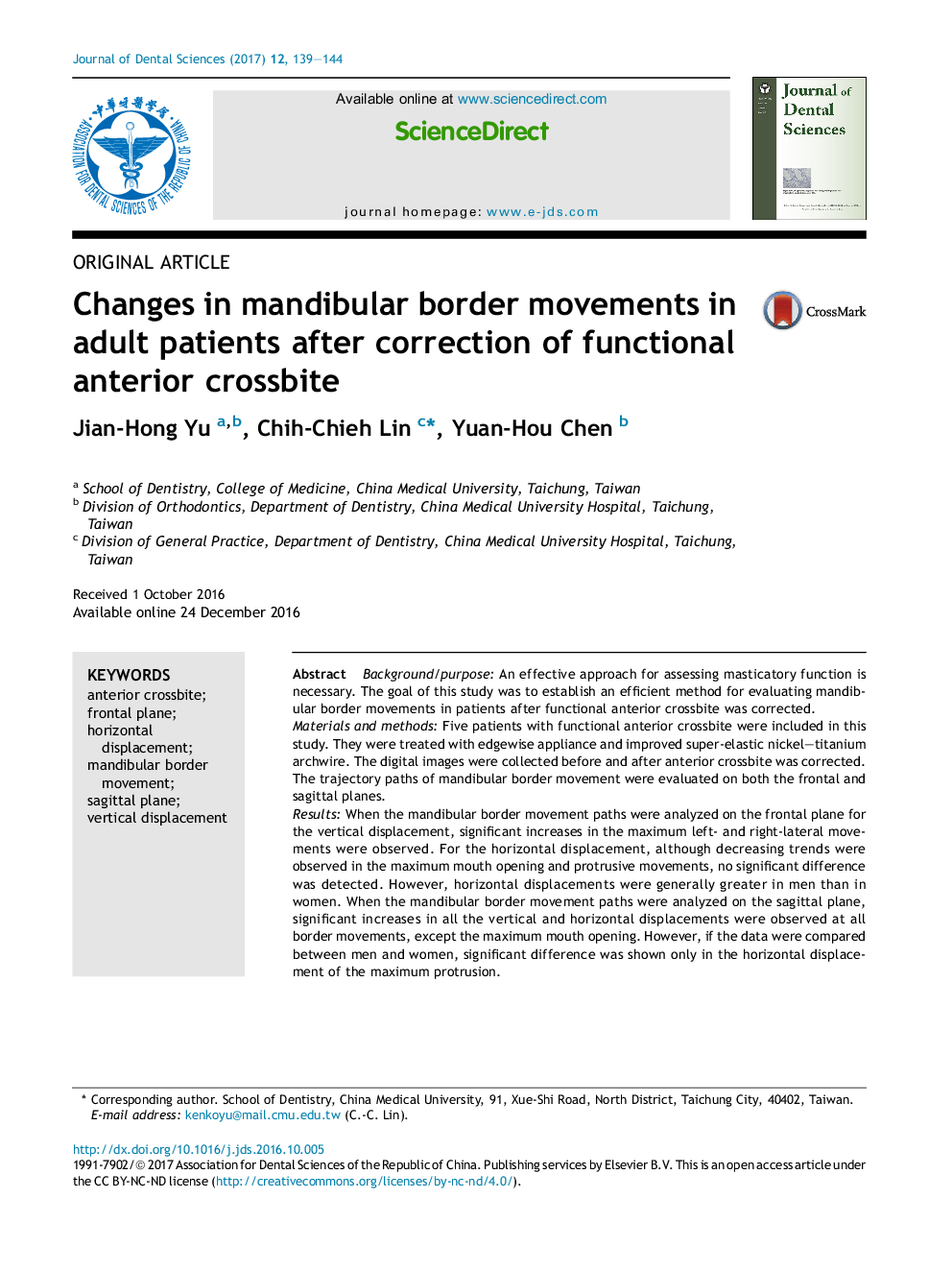| Article ID | Journal | Published Year | Pages | File Type |
|---|---|---|---|---|
| 5640413 | Journal of Dental Sciences | 2017 | 6 Pages |
Background/purposeAn effective approach for assessing masticatory function is necessary. The goal of this study was to establish an efficient method for evaluating mandibular border movements in patients after functional anterior crossbite was corrected.Materials and methodsFive patients with functional anterior crossbite were included in this study. They were treated with edgewise appliance and improved super-elastic nickel-titanium archwire. The digital images were collected before and after anterior crossbite was corrected. The trajectory paths of mandibular border movement were evaluated on both the frontal and sagittal planes.ResultsWhen the mandibular border movement paths were analyzed on the frontal plane for the vertical displacement, significant increases in the maximum left- and right-lateral movements were observed. For the horizontal displacement, although decreasing trends were observed in the maximum mouth opening and protrusive movements, no significant difference was detected. However, horizontal displacements were generally greater in men than in women. When the mandibular border movement paths were analyzed on the sagittal plane, significant increases in all the vertical and horizontal displacements were observed at all border movements, except the maximum mouth opening. However, if the data were compared between men and women, significant difference was shown only in the horizontal displacement of the maximum protrusion.ConclusionOn both the frontal and sagittal planes, after correction of the anterior crossbite there are increases in vertical and horizontal displacements at all kinds of mandibular border movements except for the horizontal displacements at the maximum mouth opening and the maximum protrusion.
